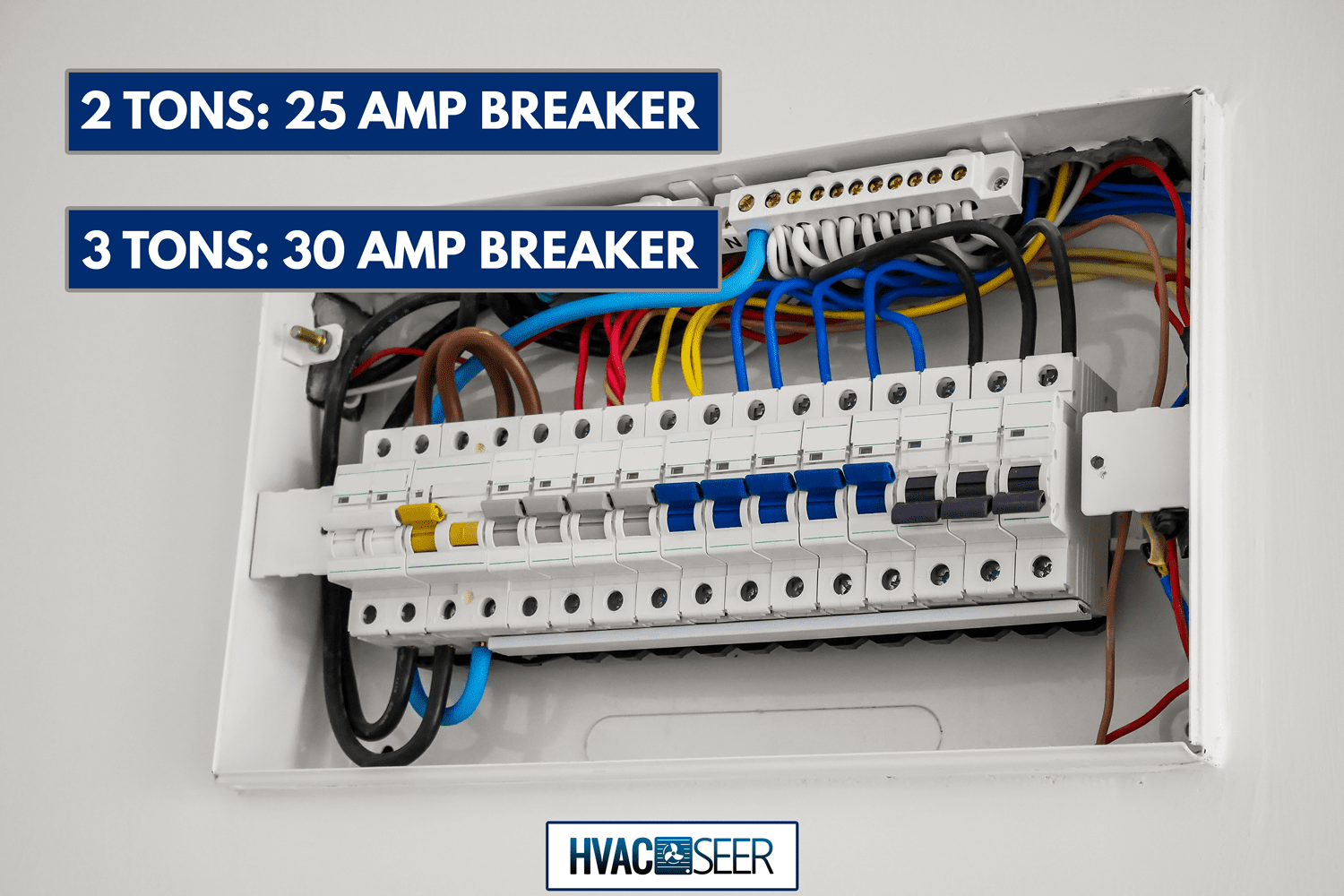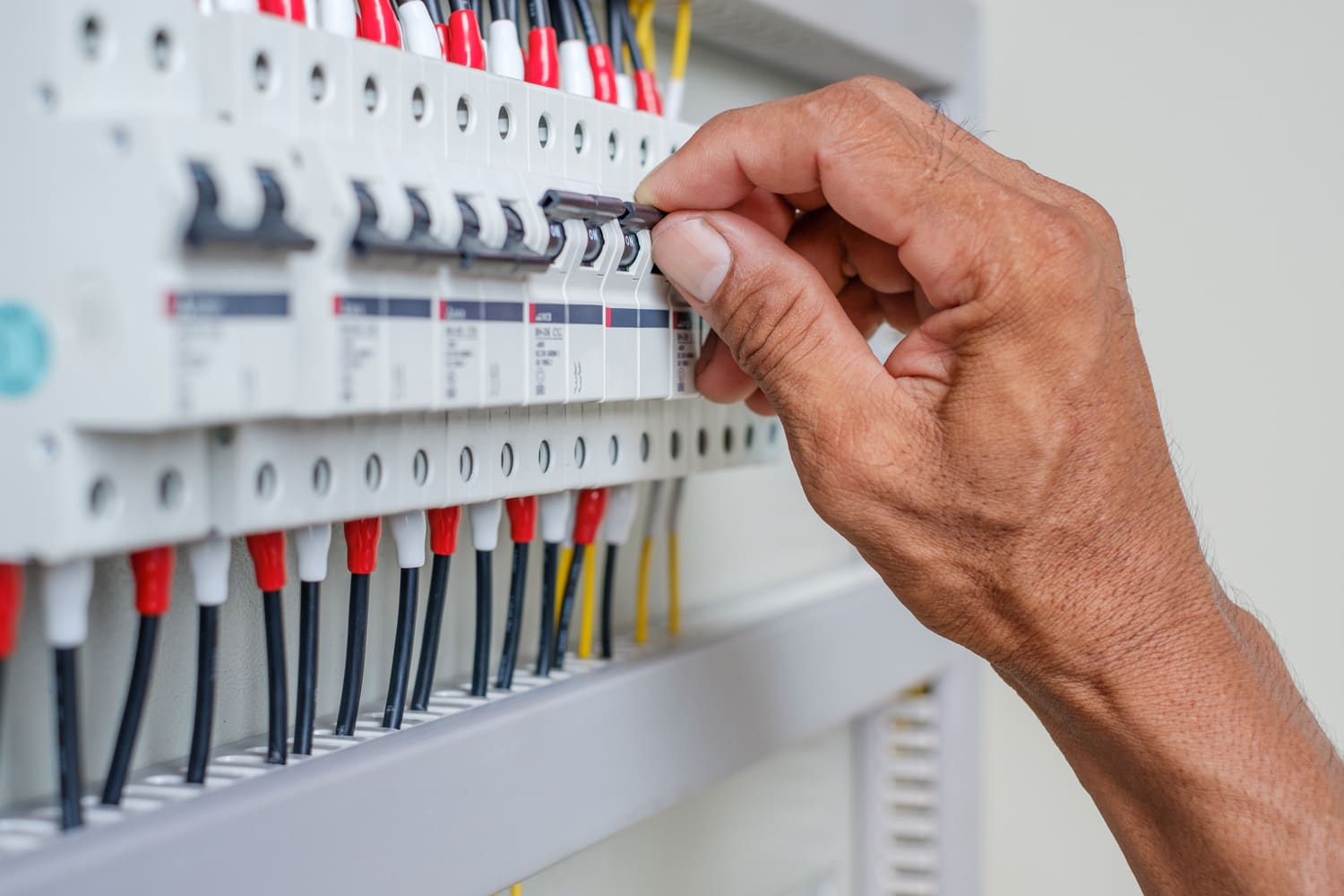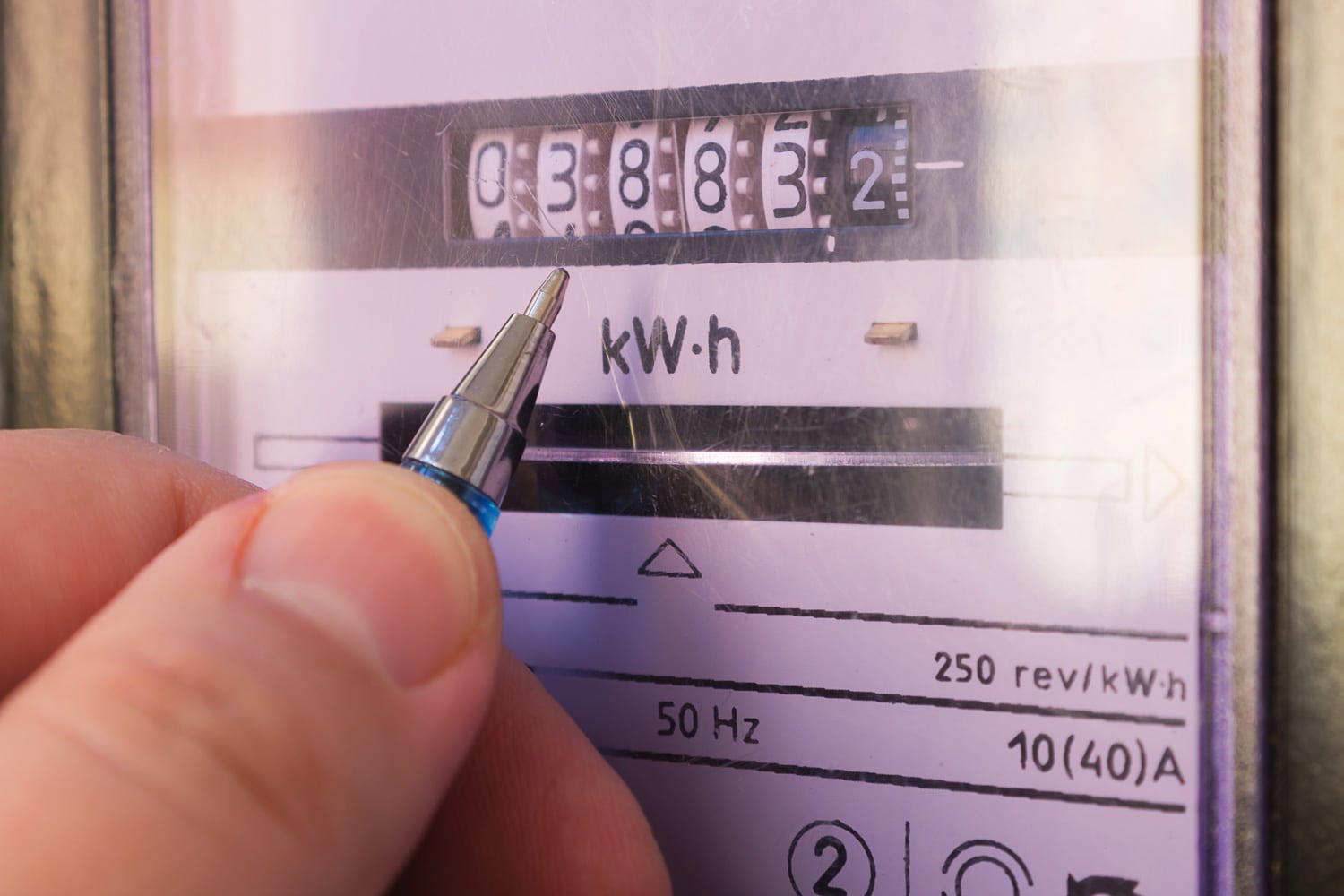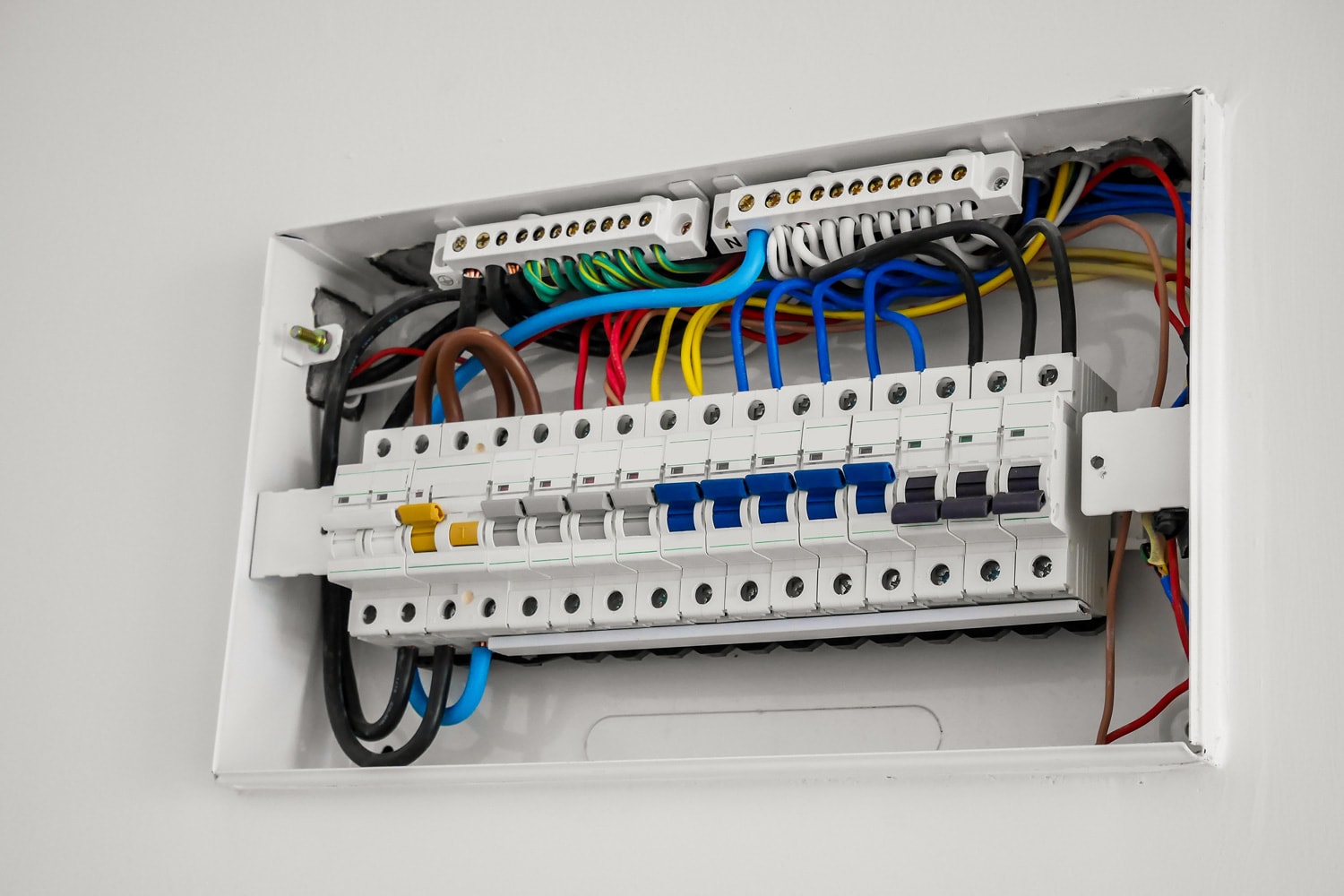You cannot overemphasize the right size breaker for a mini-split air conditioner. Though sometimes identifying breaker sizes can be a challenge for you. Knowing what size breaker for a mini-split AC is a crucial thing to consider. Luckily, we have the answers for you below. Let's discuss!
Generally, mini-split AC systems of 24,000 BTU/2 tons cooling capacity will require a minimum 25 amp breaker. If you have a larger mini-split system, a 30 amp breaker is enough for 36,000 BTU or 3 tons.
Furthermore, you'll have to go for a 50 amp breaker for a much larger mini-split system around 60,000 BTU. You may also refer to your AC manufacturer manual or label for additional details.
In this post, we'll discuss the various type of breakers you may need. We'll also explain the other breaker sizes you may like. We'll also cover why your breaker becomes bad. With that said, let's dive in!

What Size Breaker For A 2 Zone Mini Split System?
A 20 amp breaker will power an 18,000 BTU 2 zone system with two 9,000 BTU indoor mini-split units.
Moreover, a 30 amps breaker is enough for each 18,000 BTU indoor unit and 36,000 BTU condenser unit. In contrast, a 40 amp breaker is sufficient for any two zones or higher system with 48,000 BTUs.
NOTE: Complying with your local electrical code will help ensure the precise size breaker you'll need.
See this Durable Breaker on Amazon.
Single Zones: 115v Vs. 220v - Which To Choose?
Mini-split systems are available in 115v and 220v voltages. The voltage sizes of your mini-split vary depending on the maker, model, and budget.
Typically, mini-split systems with lower voltage values have lower BTU capacity. A 115v mini-splits have a BTU capacity ranging from 9,000 to 12,000 BTUs. In contrast, 220v mini-split systems have capacities ranging from 18,000 BTUs.
A 1-ton mini-split with a single outdoor unit and a single indoor component can range in price from around $1,300 to $5,000, with labor costs ranging between $300 to $1,500 for basic installation.
Please note that this average cost varies depending on your product supplier and the installer's expertise. Choose wisely what yours to install and what size is best for your home and your need.
What Size Breaker For A 115v Mini Split System?
Any air conditioning unit, whether standard or mini-split type of system, must have a breaker box located within the building nearby the unit.
Having a 115v mini-split system requires a 15 amp circuit breaker. Following the correct size, the breaker prevents serious problems that may occur in the process.

Will A Bad Breaker Cause Low Voltage?
Your home's electrical system is highly fragile and sensitive. In addition, the components and parts that keep it together and carry power appear reliable.
But a faulty breaker is one of several causes that can trigger abnormal low voltage in your home.
Other Factors That Cause Low Voltage
Having a bad breaker isn't the only reason why low voltage occurs. It is up to you to test each component using a voltmeter or hire an expert but finding what causes this issue is critical.
Here are some common factors that cause a low voltage:
Faulty Wiring
Faulty wiring can cause low voltage; this issue is common, particularly in older houses. Over time, copper and aluminum become rusted or degraded.
As a result, it affects the wire connection to the circuit box or outlet. The issue begins with lower voltage but can escalate to no power.
Ground Faults
Ground faults are not uncommon. However, they rarely cause low voltage. A ground fault typically causes an electrically dramatic and unexpected increase.
This increase in voltage leads the breaker to trip its power and stop supplying electricity.
Installation Distance
Most people are unaware that electrical wires lose their power as they move. Low voltage can occur when the distance between the panel box and its final destination is too long.
The second larger wire size is suitable if your installation project runs more than 100 feet. This issue is usual for households in rural locations that are further away from the electricity plants that supply them.
Too Much Bend
As far as your wiring project will be, the more you bend your wire in the process. Bending the wire too much can create stress and pressure on it and eventually damage it.
The allowable bend of the wire is between 90 and 45-degree. The purpose of this is to avoid damaging the wires and also to reduce fire risk during installation.

Signs Of A Bad Breaker
Burning Odor
If you smell a weird burning odor escaping from your breaker box, one of the wiring or components in your breaker has likely burned out.
Flickering Lights
Flickering lights often indicate low voltage, and a faulty breaker is likely to cause this case. However, mind that fade-in and out lights don't always mean a defective circuit breaker.
Breaker Becomes Too Hot
Suppose you notice that your breaker becomes oddly too hot without touching it. You should inspect whether a bad odor or power shortage is currently present in this scenario.
By then, you should be able to properly evaluate that your breaker has gone bad.
What Are The Other Types Of Breakers?
A circuit breaker detects excessive current and trips the system, halting the entire flow of energy before any serious damage occurs.
Let's walk you through the other types of breakers below:
Single Pole Breaker
This single box breaker is also a pole that supplies up to 120 volts at various amperages. This sort of breaker often utilizes 15 to 20 amps and is appropriate for applications like lighting systems.
Double Pole Breaker
As the name suggests, a double pole is two circuit boxes connected to deliver up to 240 volts of power.
This breaker is suitable for household systems such as your air conditioner or heavy appliances, especially dishwashers and dryers.
Arc Fault Interrupters (AFCI)
This safety breaker switches off all power when an electrical arc is sensed. Electrical arcs are frequently generated by faulty wiring.
Ground Fault Circuit Interrupters (GFCI)
GFCIs cut electricity as soon as an electrical short circuit is detected, and it will also re-direct the electrical surge to safe ground into your surrounding.
Without these dependable circuit breakers, there's no other way to run all your electrical appliances in your home correctly.
Can A 10-Gauge Wire Handle A 40 Amp Breaker?
An extensive understanding of wire gauges and amperage is essential for electrical tasks. Additionally, this poses a risk not just to the project as a whole but also to your safety.
Using a ten gauge wire with a 40 amp breaker isn't advisable because each wire gauge has a total amperage. As the circuit ampacity rating increases, the wire diameters must also increase.
Furthermore, an eight gauge wire can be sufficient to handle the load for a 40 amp breaker, and you can use a ten gauge wire for a 30 amp breaker.
WARNING! This job requires further understanding and professional electrical training. Hiring an expert will ensure the safety and quality of the finished project.
How Much Power Does A Mini Split System Need?
Before choosing a ductless mini-split setup over other choices, like central air conditioners, most homeowners want to know how much power it consumes.
Generally, most mini-split models have a 9,000 BTU cooling capacity rate and use nearly 600 watts of power on average. However, during peak and extreme heat, power usage can skyrocket by 2,050 watts, depending on your usage and airflow demand.
The equipment's British Thermal Unit (BTU) determines the overall amount of electrical power consumed by the system, energy-efficiency value, and cooling capacity.

Is A Ductless Mini Split System Efficient?
Mini-split air conditioners systems and ductless heat pumps are more efficient than other AC cooling systems for various reasons:
- It reduces air leaks and energy loss.
- You don't need ducts for air distribution.
- No need for a separate zoon cooling setup.
- You can save money because it is far more inexpensive.
- It eliminates the hassle of repairing and maintaining the duct system.
According to ENERGY STAR, you can save roughly 20% - 30% of power loss when duct leaks are controlled.
In Conclusion

If you enjoy reading this one, please check out our other related posts below!

